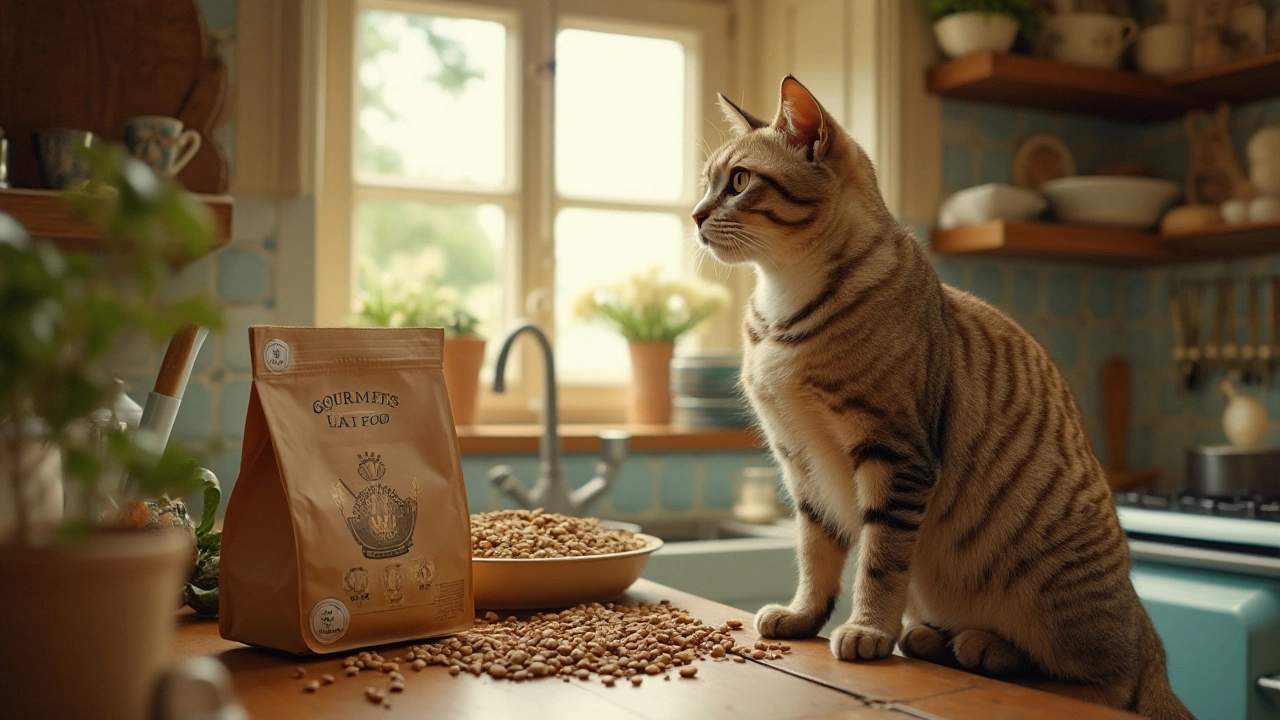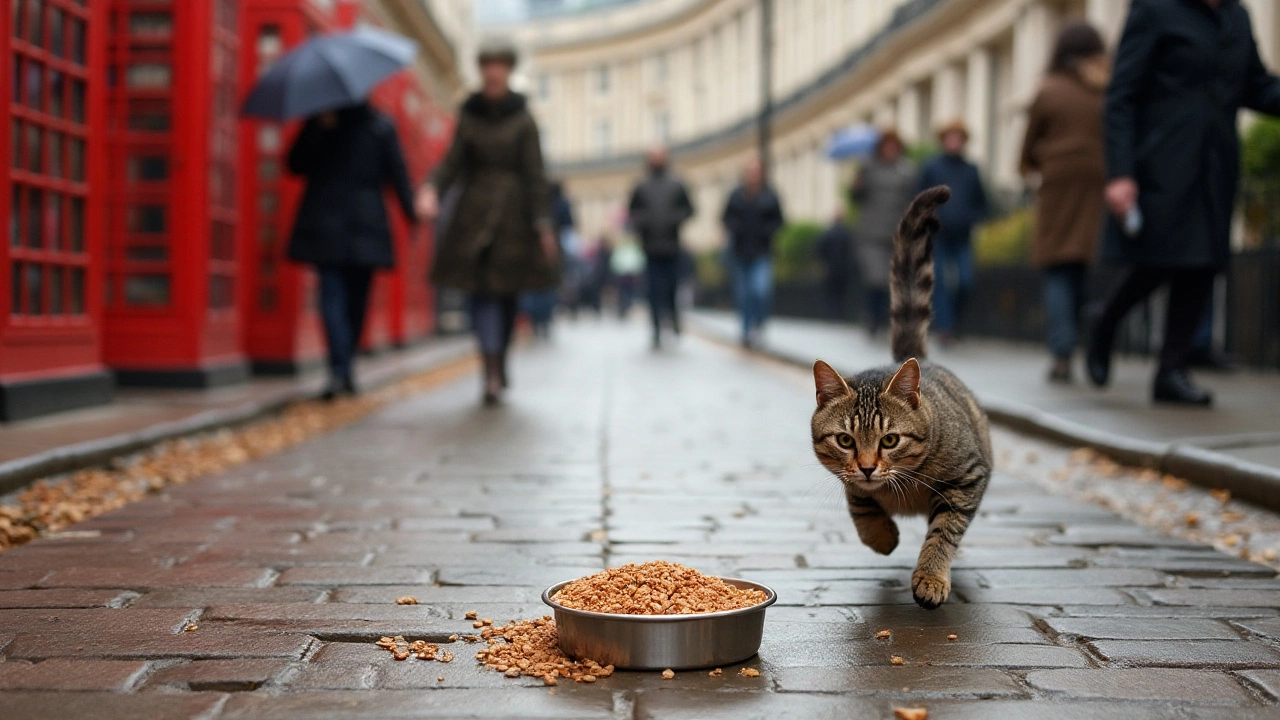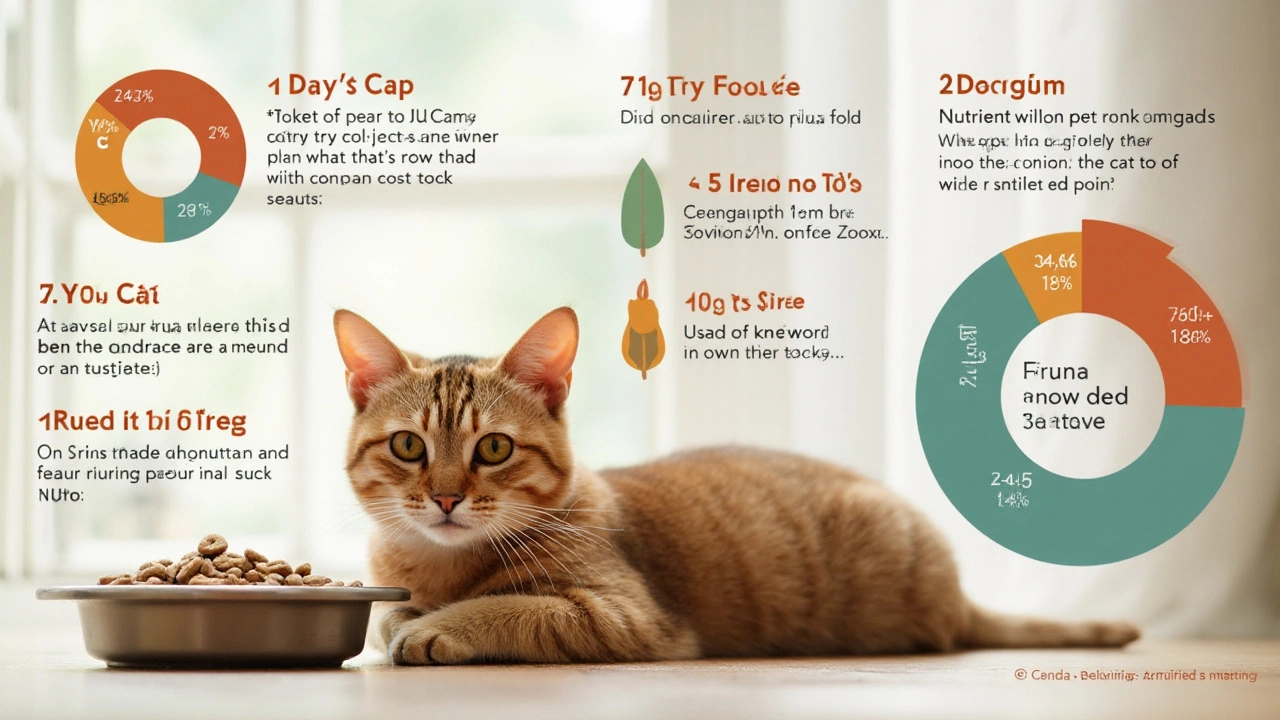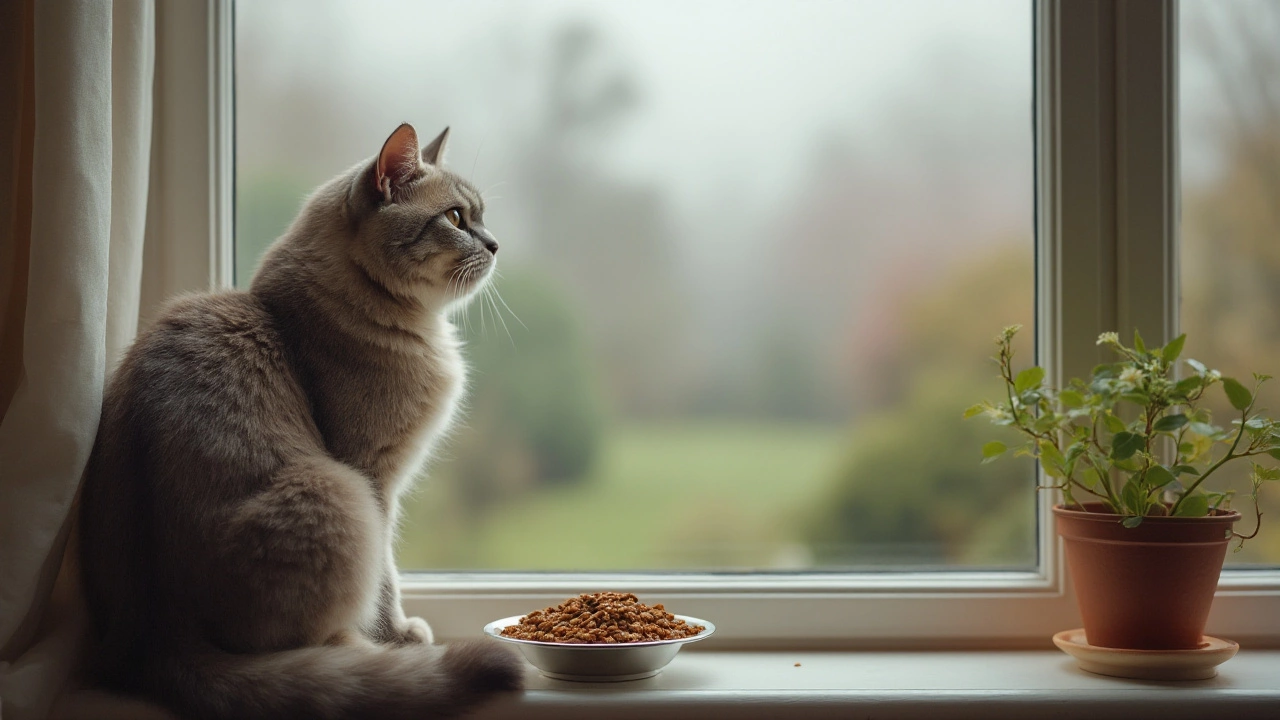When it comes to feeding our feline companions, the type of food we choose can spark quite the debate among pet enthusiasts. Dry food, or kibble, is often praised for its convenience and dental benefits, but can it sustain a cat's health all on its own? Let's embark on a journey to uncover whether a dry-food-only diet ticks all the nutritional boxes for our beloved whiskered friends.
Cats, obligate carnivores by nature, have specific dietary requirements crucial for their overall wellness. Understanding these needs helps us navigate the grocery aisle and make informed choices. While dry food is undeniably prevalent and favored by many, it's essential to weigh its pros and cons when considering it as a sole food source.
- Essentials of Feline Nutrition
- Benefits of Dry Cat Food
- Potential Drawbacks of a Dry-Food-Only Diet
- Tips for a Balanced Cat Diet
Essentials of Feline Nutrition
Cats are fascinating creatures, loved for their independence and mystery, yet the secret to their health lies in something far simpler than their complex personalities: their diet. As obligate carnivores, felines require a diet that's steeped with high protein from animal-based sources. Unlike dogs or humans, cats do not possess the ability to derive necessary nutrients efficiently from plant matter. Their digestive systems are designed to extract protein from meats, which is fundamental to their muscle development, bodily repair, and energy requirements. It's crucial that any cat diet showcases a solid percentage of protein, ideally around 30-40%, making up its caloric intake. Among the vital proteins, taurine stands out, a compound critical for heart health and vision, which they naturally derive from animal flesh.
Equally, fat plays a significant role in a cat’s diet. Not only does fat provide twice the energy of protein or carbohydrates, but it also aids in the absorption of fat-soluble vitamins. Omega-3 and Omega-6 fatty acids are necessary for maintaining healthy skin and a shiny coat, and they support reproductive health and brain function. Pet owners should ensure that their pets' diets include about 15-20% of calories from fats. Despite popular belief, carbohydrates aren't completely unimportant; however, their proportion should remain low. In excess, they can cause obesity and their benefits are marginal compared to proteins and fats.
Water is often overlooked but plays a fundamental role. Cats have evolved from desert animals and naturally take in most of their water through their food. Consequently, dry kibble's low moisture content necessitates the need for a good water supply available to cats that are primarily on a dry diet. Cats are prone to urinary tract problems, and adequate hydration can significantly mitigate these health risks. Hence, ensuring they have plenty of water is paramount. An interesting note from the Journal of Feline Medicine and Surgery states,
“Cats require a diet proportionate in protein, fat, and micronutrients derived mainly from a meat-based diet, without relying heavily on carbohydrates for energy.”This underscores the importance of providing a nutritionally balanced diet that's rich in essential amino acids and vitamins for maintaining our felines’ overall health.
To better understand how much of these nutrients are available in a typical cat food, here’s a simple breakdown in a tabular form showcasing the average nutrient composition in commercial cat diets:
| Nutrient | Dry Food (%) | Wet Food (%) *approx. water content adjusted |
|---|---|---|
| Protein | 30-40 | 8-12 |
| Fat | 10-20 | 2-5 |
| Fiber | 1-3 | 0.5-1.5 |
Vitamins and minerals complete the dietary needs of cats. Vitamin A is crucial for vision, while vitamin D assists in calcium and phosphorus balance in the body—key for bone health. Minerals like calcium, phosphorus, and magnesium are essential for various bodily functions but should be balanced correctly to avoid health issues such as bladder stones. Thus, checking the content and proportions when choosing foods is key to ensuring your cat maintains these nutrient levels within healthy limits.

Benefits of Dry Cat Food
Exploring the benefits of dry cat food reveals why many cat owners lean towards this convenient option. One of the most cited advantages is its contribution to dental health. Chewing kibble can help to maintain oral hygiene by scraping off plaque and tartar from cats' teeth. While this effect should not replace regular dental cleanings, it is an added bonus that contributes to fresh breath and feline dental care.
The convenience of dry cat food cannot be overstated. It is easy to store, has a long shelf life, and doesn’t require refrigeration. This works well for busy pet parents who appreciate the practical aspect of scooping out a portion without much fuss. Plus, dry cat food is less likely to spoil if left out for longer periods, making it suitable for cats that prefer grazing throughout the day.
Dry food provides an economic advantage as well. Typically, it is less expensive than wet food, offering a cost-effective solution for those who need to keep an eye on their budget while ensuring their cats get their meals on time. Bulk buying is also more feasible with kibble, thanks to its compact and durable nature.
Another underlined charm of dry cat food is portion control and satiety. Because of its concentrated nutrition format, it can be easier to measure and regulate portion sizes, which could help to maintain a healthy weight in cats when integrated into a balanced diet. Some dry foods are engineered to help control hairballs or support urinary health, showcasing targeted nutrition in tidy packages.
"While dry food supports dental health via mechanical action, it does not constitute a complete dental care system by itself," notes Dr. Jane Robertson, a veterinarian with two decades of experience.
Nutritionally, some dry cat foods feature enhanced formulas that cater to specific health needs. High-quality brands often include added vitamins, minerals, and proteins necessary for a cat’s active lifestyle. This versatility allows owners to select formulations tailored to specific life stages, activity levels, and health conditions, offering peace of mind about nutritional adequacy.

Potential Drawbacks of a Dry-Food-Only Diet
While dry food is a staple in many households due to its convenience and long shelf life, relying solely on it for your cat's diet can pose several challenges. One of the main concerns is its lower moisture content compared to wet food. Cats inherently get a significant portion of their water needs from their food. Feeding them primarily dry kibble could lead to dehydration, especially if they aren't avid water drinkers. Hydration plays a fundamental role in a cat's kidney health, and inadequate water intake might increase the risk of urinary tract infections and kidney disease over time.
Another point to consider is the nutritional balance in dry food. Cats require a high amount of protein from animal sources given their status as obligate carnivores. Some dry foods might rely more on grains and fillers to create structure, which might not align with their dietary needs. Cat nutrition experts stress the importance of checking the protein sources in dry foods to ensure they come predominantly from animals and not plants. The lack of variety in a dry food diet might also mean your cat misses out on essential fatty acids and amino acids like taurine, which are paramount for maintaining good vision, heart health, and reproductive functions.
There are also concerns related to obesity with dry food diets. Due to its energy-dense nature and the ease with which it can be portioned inaccurately, some cats might consume more calories than they should, leading to weight issues. An overweight cat is predisposed to a host of health issues, from diabetes to joint stress, which can dramatically impact their quality of life. It's crucial to measure out the right portions and monitor your cat's weight to avoid these pitfalls.
Dry foods, known for their crunch, are often touted as beneficial for dental health. However, this benefit could be overstated. While the crunchy texture can help scrape tartar, it does not replace regular dental care such as brushing or professional cleanings. A high-carbohydrate diet from some kibbles could actually exacerbate dental issues due to sugar content.
According to Dr. Jane Robertson, a veterinary nutritionist, "While dry food can contribute to oral health, it should not be the sole method relied upon for proper dental care. Diverse strategies alongside good nutrition are essential."
A closer look at the dry cat food market reveals variability in ingredient quality and safety. Pet owners should be vigilant about research and reviews, ensuring the brands they choose adhere to strict safety standards. Recalls, although rare, have occurred, casting a light on the importance of staying informed about what’s going into your cat's bowl. While the industry has standards in place, variations can exist from one manufacturer to another, making it crucial for cat parents to be discerning and knowledgeable buyers.

Tips for a Balanced Cat Diet
Ensuring your cat receives the right balance of nutrients is crucial for their health and happiness. While many cat owners lean toward dry food due to its convenience, it's vital to understand how to complement it to form a well-rounded diet. Cats are obligate carnivores with specific dietary needs that cannot be overlooked. High-quality protein, typically derived from sources like chicken or fish, should form the foundation of their diet alongside essential amino acids, particularly taurine, which is found in meat proteins. Lack of taurine can lead to severe health issues like blindness or heart disease. Fortunately, most commercial cat foods are fortified to include taurine, but it's a factor to keep in mind when evaluating your cat's meal plan.
Hydration is another key aspect when considering a dry diet. Cats in the wild derive much of their water intake from their prey, so they naturally drink less water. This instinct can lead to issues if they're primarily consuming dry food, as kibble typically has very low moisture content. To compensate, ensure fresh water is readily available at all times and consider incorporating wet food into the diet occasionally to boost moisture intake. Alternatively, you can soak dry kibble in a little water to make it more palatable and hydrating for your cat.
A proper cat diet should also include a suitable balance of fats and carbohydrates. While it may be tempting to adopt human dieting trends, it's important to remember that cats have evolving nutritional needs distinct from ours. Fat is a delicious and critical energy source for cats, playing a role in the absorption of fat-soluble vitamins and providing essential fatty acids. However, the diet should not contain too much carbohydrate, as felines have limited ability to digest them.
"Cats are not small dogs and should not be fed as such. Their unique physiology demands a diet rich in meat proteins," notes Dr. Jane Brunt, a leading feline veterinarian.
It's also helpful to remain open to adjusting your cat’s diet according to their age, health status, and activity level. Kittens, for example, require more protein and calories than adult cats to fuel their rapid growth and development. In contrast, a senior cat might need a diet with higher fiber and reduced calories to maintain a healthy weight and digestive balance. Always consult with a veterinarian if you have concerns or questions about your cat's specific dietary needs.
In summary, maintaining a balanced diet for your cat involves understanding their carnivorous nature and tailoring their meals to ensure they receive adequate protein, hydration, and nutrients specific to their life stage. By planning thoughtfully, dry cat food can play a key role in a healthy diet, especially when supplemented wisely.





